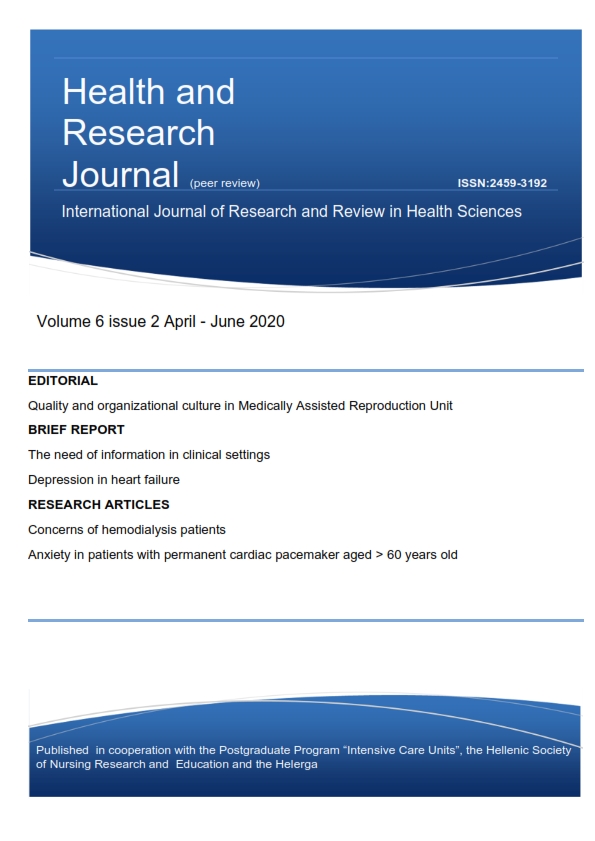Anxiety in patients with permanent cardiac pacemaker aged > 60 years old

Abstract
Introduction: A cardiac pacemaker is a small implanted device to control abnormal heart rhythms. According to estimates, 3 million individuals worldwide live with an implanted permanent pacemaker (PPM) while about 600 thousand pacemakers are implanted, annually.
Purpose: to explore anxiety of pacemaker recipients as well as all the associated demographic and self-reported characteristics.
Material and Method: 100 outpatients with PPM were enrolled in the study. Collection of data was performed by the completion of the “Self-rating Anxiety Scale Zung (SAS)” which included patients' characteristics.
Results: From the 100 participants 65% were men, 66% were >70 years old, 60% married, 50,5% of primary education and 90% lived in Attica. In terms of anxiety, 50% of recipients scored less than 48 on SAS scale (wide of range: 20-80) indicating mild to low levels of anxiety. Regarding associated factors, anxiety was found to be statistically significantly associated with gender (p=<0,001), understanding of provided information (p=<0,001), understanding of precautions in electromagnetic fields (p=0,021), desire for more frequent and long term follow-up and devise assessment (p=<0,001 and p=<0,001, respectively).
Conclusions: Though pacemaker is an opportunity to prolong survival, however systematic assessment of anxiety and all the associated factors is considered to be of primary importance in clinical pacemaker settings.
Article Details
- How to Cite
-
Vasileiou, S., Iordani, M. M., Martinis, I., Nikitopoulou, A., Sakiqi, J., Sekeroglou, E., Tsampoula, I., & Dousis, E. (2020). Anxiety in patients with permanent cardiac pacemaker aged > 60 years old. Health & Research Journal, 6(2), 66–76. https://doi.org/10.12681/healthresj.23317
- Section
- Original Articles
Copyright notice:
The journal "Health and Research Journal" reserves the rights for copyright of the content of the website and also the copyright of the articles published.
By virtue of their appearance in this journal, the articles are free to be used for non-commercial purposes. However, the articles cannot and must not be used in anyway, published elsewhere or modified without any reference to the author and the first publication of the article.



